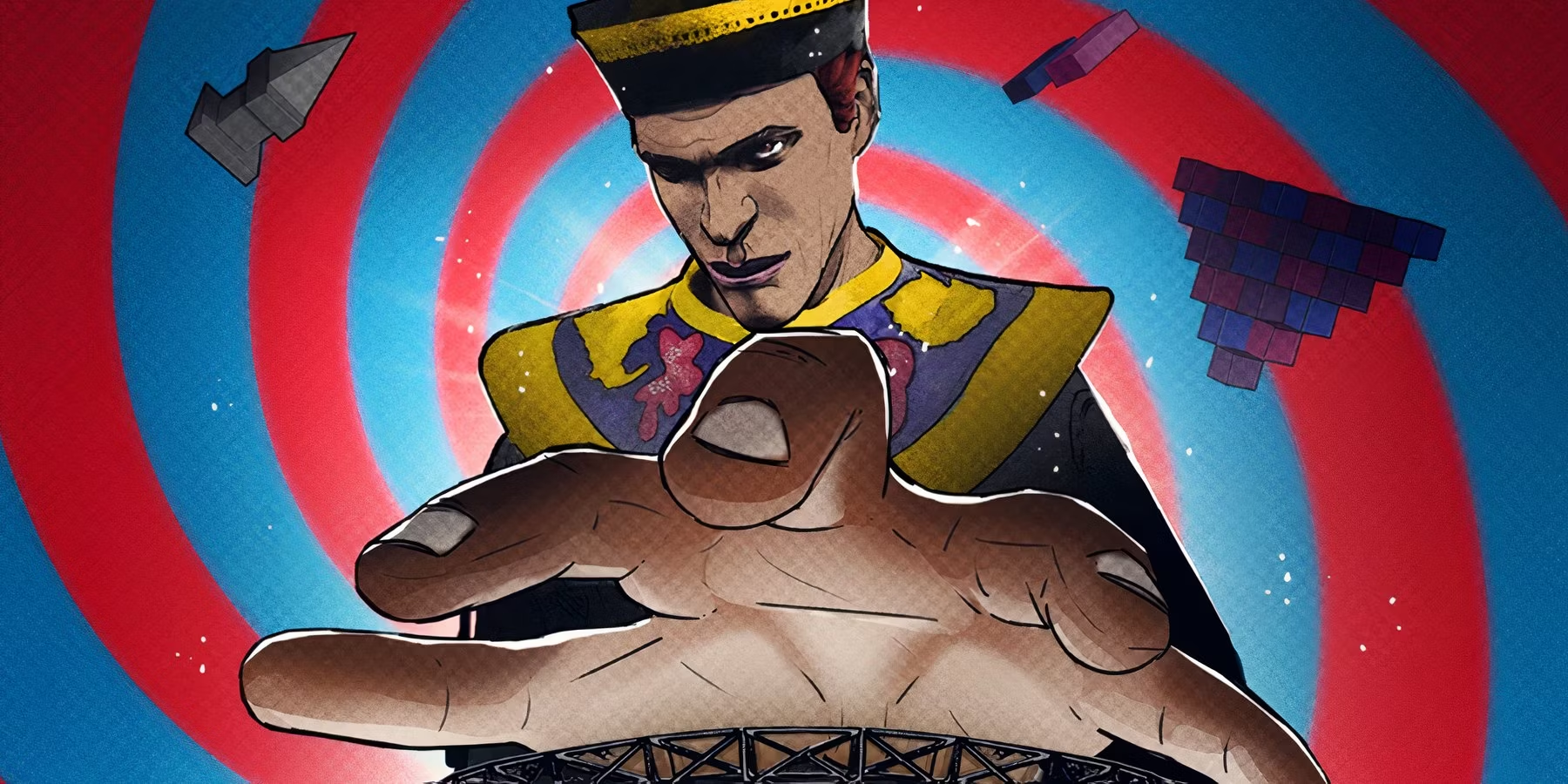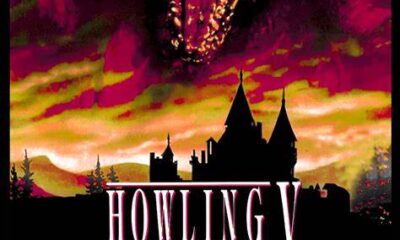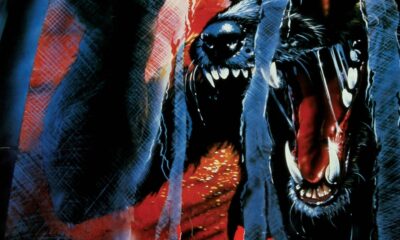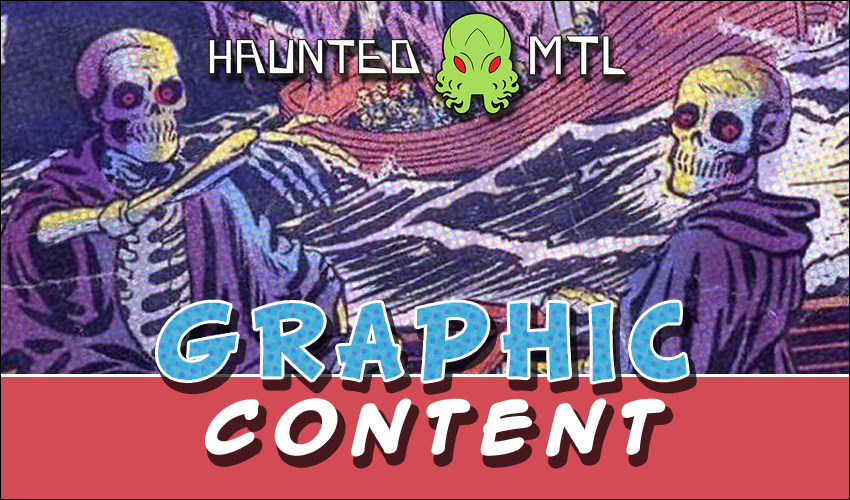
Graphic Content #3
More Videos
Published
4 years agoon
Welcome back to Haunted MTL’s ongoing horror comic review feature, Graphic Content. In our third installment, we’ll be keeping up with John Constantine: Hellblazer, Killadelphia, and Sink.
We’re always on the lookout for new titles to cover, so leave your suggestions in the comments.
John Constantine: Hellblazer #5

This issue we continue to spend time with John’s current generation of characters while also dipping back into the past. For fans of Vertigo’s run, a familiar set of names should prove exciting. It has been fun to see the new-world magic butt up against John’s old-world magic. Even back then, however, John was a rebel, so his positionality in the magic world allows him to bridge a gap and highlight what seems to be the idiosyncrasies of both eras in a fun way.
John’s old Vertigo-era contact, Clarice Sackville, pops up to let John know about something key, a prophecy of sorts: the final death of John Constantine is approaching. Particularly entertaining is Clarice playing on John’s ego with expertise. As for Map’s fate, we’ll need to stick around for more information.
Also enjoyable? John’s frustration with Tommy Willowtree. What is especially fun is the polyamorous representation in the book with John, not a stranger from sampling carnal delights from anywhere he can take them, even a bit shocked by Willowtree’s more modern concept of relationships.
What has been most fun about this current arc is a sense of growth in John. When it comes to comics from “the Big Two” progression in characterization is often something that is temporary at best, and non-existent at worst. With John Constantine: Hellblazer, we’ve managed to see John grow in significant ways, and this issue may be the most substantial example of that with him putting aside his own crap and supporting someone else that is not an immediate benefit to himself.
This is, unfortunately, the last issue with Matías Bergara on art duty. His style may not be what one immediately thinks of for Hellblazer, but I appreciate the look and it worked perfectly well for what the story was. It wasn’t necessarily that this arc, “Scrubbing Up” was a light sort of story, but it was certainly a bit more whimsical than what one may expect. Bergara’s work was solid and he is definitely in a short-list of artists I would love to see on the book again.
Five issues into Hellblazer and I am still very much looking forward to each and every installment.

John Constantine: Hellblazer #5 was written by Simon Spurrier, illustrated by Matías Bergara, and colored by Jordie Bellaire.
Note: As of this installment of Graphic Content, John Constantine: Hellblazer #5 does not seem to be listed on DC’s website.
Killadelphia #6
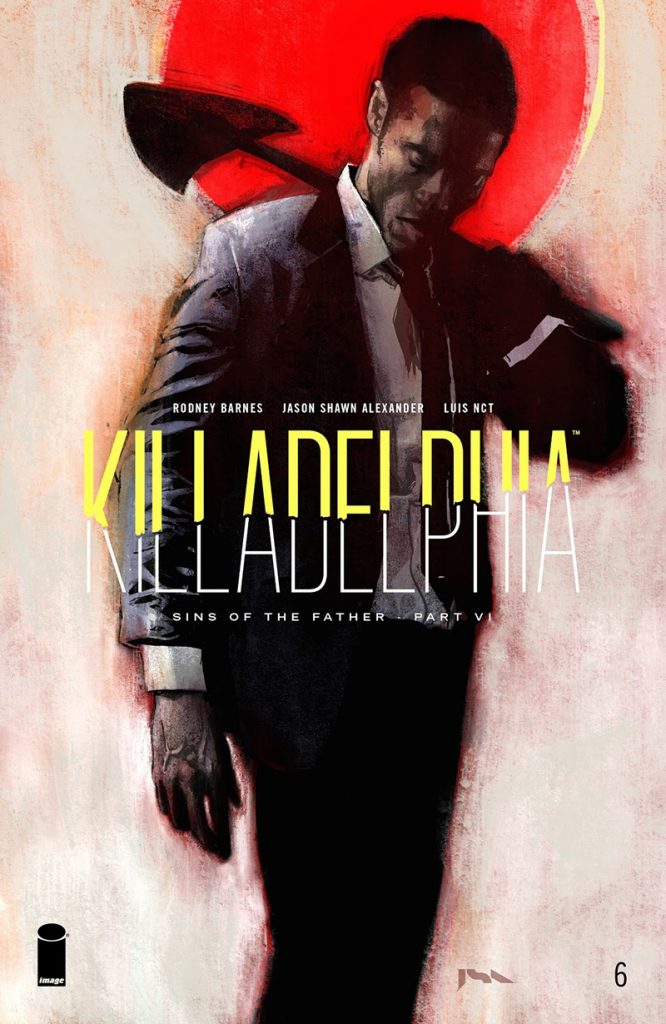
We conclude the first arc of Killadelphia with this sixth issue, “Sins of the Father Part VI, For God and Country.” Does one of my favorite horror comics around stick the landing?
Overall, yes it does. This issue does a great job of presenting a level of finality while leaving the series open to move forward, as one would hope. Yet, I have my quibbles, but it is fairly minor stuff. My main concern is the vampiric “battle” that wraps up Adams, John Sr., and Tevin’s plotlines. I’m not really a fan of big, flashy vampiric powers and while I think Killadelphia as a whole presented some great vampires, I am not the biggest fan of what feels like a DragonBall Z kind of beam combat. It just doesn’t feel appropriate for the tone of the book.
Also, having the complete volume, I can safely say that I wish the series was a little less compressed. Specifically, I think two more issues might have fixed some overall pacing that I see going on now with the entirety of the volume available. This is all hindsight, of course.
What I am intrigued by most regarding this issue, though, is where it leaves the series going forward. Two particularly key figures seem to be gone, now, and while I am concerned about their absence, I am also intrigued by the potential in the shakeup of the world. Particularly given the rather public appearance of the vampires as the book progressed. This has the chance to really alter the landscape of the book and Philadelphia itself. Overall, as a first volume, it is very satisfying and I am very much eager to read volume two.
From what I have gathered, Jason Shawn Alexander will be continuing art duties going into volume two, and I am highly pleased by that. I’ve written quite a lot about Rodney Barnes’ storytelling here, but Jason Shawn Alexander’s artwork is a pretty perfect vehicle for what Barnes is doing. In one of my first reviews of the series I spoke about a level of grittiness to the artwork, and the series has not only kept that consistent but also refined it. This is a great looking book, and volume two should maintain that trend.
I also should mention the great coloring choices by Luis Nct. The palette is very subtle with a heavy emphasis on reds, as one would expect from a vampire book, but the usage of those reds is particularly skillful across the first volume.
It’s going to stink not having Killadelphia to read in my monthly pull from my local comic shop (shout out to Digger’s Comics!) but I am glad there will be more in the near future. As a whole, I think the first volume stands out as one of the best vampire comics I have ever read, despite some minor issues I had here and there.

Killadelphia #6 was written by Rodney Barnes, illustrated by Jason Shawn Alexander, and colored by Luis Nct.
Sink #2
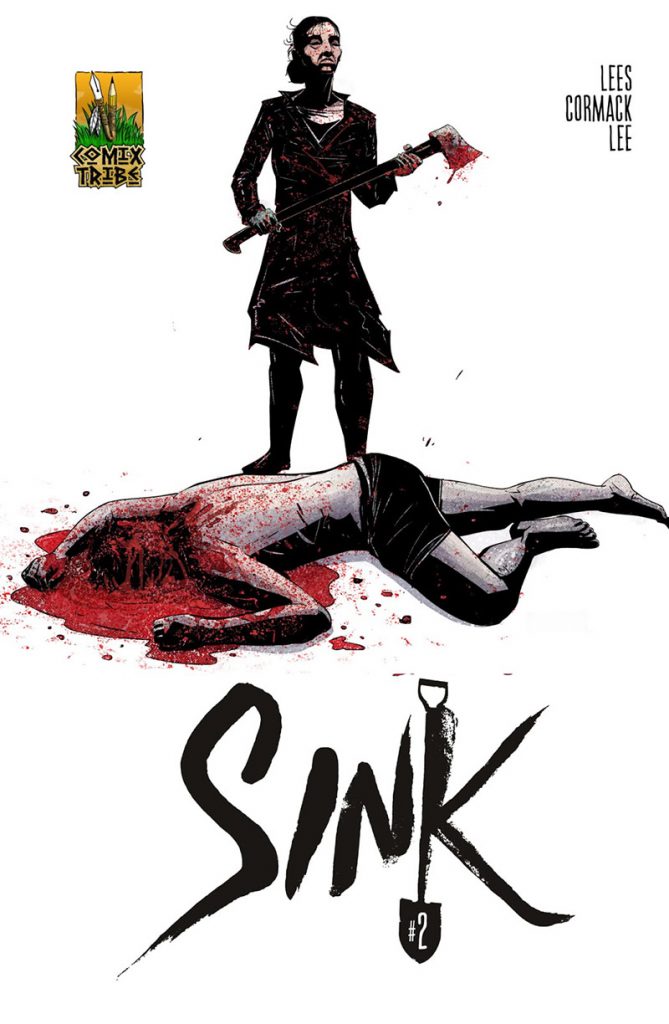
I enjoyed how utterly messed up the first issue of Sink was to keep reading it. Sink #2, “The Door at the End,” is more of the same, so your own mileage may vary if you would be down for it. For someone like me, it is a perfectly fun comic. I am still having a little trouble with some of the Glasgowisms present, but we can chalk that up to my being an ignorant American.
The series, at least going off of the first two issues, feels anthologized. Different slices of a fucked up, hyper-violent Glasgow. This time around we follow the fallout of a Ménage à trois gone horribly, violently wrong through the perspective of a new character. This new character, Sharon, is a fixer of sorts who hails from Sink Hill, the neighborhood that gives the series its name. She arrives to dispose of a corpse.
Only what was dead doesn’t seem to stay dead in this case. Or does it? What follows is a dance party with an apparently homeless man, a discussion of a really messed up dream, and a surprisingly effective fake-out.
It’s all very moody stuff but there is a certain catharsis in that. Sink isn’t a feel-good story and among the selections in this installment of Graphic Content it has the distinct vibe of feeling hopeless, in a way. That’s not a bad thing though. Sink seems to be a series of feel bad stories but that is not meant to disparage what is going on in them as the stories are very much rooted in exploring trauma… just violently. John Lees seems to be looking at a very damaged place that just seems to try to sort that damage by inflicting more damage and it’s a good read. Very sad, but good.
Alex Cormack’s art is well suited to this type of storytelling. It’s a broader, cartoonier style than Jason Shawn Alexander’s work in Killadelphia, but it has the same sort of overall grunginess. Sink is a rough read about a rough place, and the visuals are just as rough. It all fits.
Overall, Sink is shaping up to be a fun anthology series. It’s definitely made for an interesting portrait of Sink Hill over the course of two issues, and it makes one wonder what other stories lurk in that seedy, violent neighborhood.

Sink #2 was written by John Lees and illustrated and colored by Alex Cormack.
With Killadelphia on a break, looking forward to a new title entering the mix with Graphic Content #4.
Agree or disagree with the reviews? Have a title you think I should cover? Let us know in the comments.
Related posts:
David Davis is a writer, cartoonist, and educator in Southern California with an M.A. in literature and writing studies.

You may like
Released in May of this year, You Like It Darker is the latest short story collection by Stephen King.
In the afterward King says. “You like it darker? Fine, so do I.” This sort of declaration might lead one to believe that this collection is going to be darker than his others. That we might reach depths of horror that we haven’t yet seen before, even from the King himself. This is a promise that this book does not deliver on. But that isn’t to say that You Like It Darker wasn’t still a damn fine read.
The good stories
The first story in the book, Two Talented Bastids, started everything out on the right foot. This is the story of a man named Mark. Mark looks after his father, who he lovingly calls Pop. Pop is a famous author His best friend, Butch, was a famous painter before he passed.
Everyone wants to know how two men who are lifelong friends suddenly become famous in their forties. But as far as the men in question are concerned, they’re just two talented bastids. That is, until Pop dies, and leaves a story to explain to Mark how one fateful hunting trip changed their whole lives.
Another tale I appreciated was Rattlesnakes. This is a sequel to the classic King novel, Cujo. If you haven’t read Cujo, this will spoil the ending for you. I, for instance, had not read Cujo.
Rattlesnakes is about Vic Trenton. A recent widower, he’s traveled to Florida to heal from his losses. There, he meets a lovely woman about his age (old) who appears to be not quite right in the head. She walks around around town like Delta Dawn, not with a suitcase in her hand but wheeling a twin stroller. Years ago, her twin sons were killed by rattlesnakes. And she’s never really gotten over that. So she wheels around the stroller and pretends they’re still in there. At least, everyone assumes she’s pretending.
Easily my favorite story in the book was Danny Coughlin’s Bad Dream. Imagine if you had a prophetic dream, but just one. That’s exactly what happens to Danny. He dreams of the location of a murder victim. When he goes to the location, which he’s never been to before, he finds the poor woman in question. Of course, the police find this extremely suspicious. And one detective grows so suspicious that he starts taking matters into his own hands.
The bad stories
Of course, not all the stories can be great. One that I especially disliked was Finn. This is the story of a young man with bad luck. I mean, terminally bad luck. So bad that he’s kidnapped in a case of mistaken identity.
This story just didn’t have a satisfying ending. Nor did it have a satisfying middle. There was just no real conclusion.
Another story that missed the mark was On Slide Inn Road. It’s the story of a family on a car trip to see a dying sister when they’re overtaken by some rough people outside of an old abandoned inn. This story also doesn’t seem to have any sort of cohesive storyline. It’s just the story of a family having a really bad day. It doesn’t go anywhere.
Overall, this was a collection that shows King’s patterns. He writes over and over about men who have lost their wives and their sons. Men who have survived their families and been left alone. Most of the main characters in these stories fall into that category. Perhaps in that way, these stories are darker than the ones King has written in the past. At least for him.
Fans of King’s work will love this book. I loved this book. I loved catching up with the lonely widower from Cujo. I loved meeting monsters who might or might not have crawled out of the back of a Buick. And while none of these stories were dark enough to disturb my sleep, they were good enough to keep me up reading late.

As summer approaches, there’s nothing quite like reading a book with warm campy vibes. It’s especially true if you’re lying on a sunny beach. Nicole M Wolverton’s A Misfortune of Lake Monsters matches that picture perfectly. It’s described as a creature feature with a Stranger Things-esque friend group.
Although set in modern times, I found the story felt like something out of the 80s (in a good way). Character dynamics reminded me of The Goonies and IT while the narrative combined just the right amount of adventure, romance, and horror to bring out nostalgia and comfort at the same time. Anyway, let’s dive (hehe) in!
Plot
Lemon Ziegler has one aspiration in life – to become a vet. Unfortunately, that would involve leaving her hometown, which is a problem as she is obligated to continue the family business. While such a situation is not out of the ordinary, the business itself definitely is. Lemon must impersonate Old Lucy, the town monster (a nice homage to the Loch Ness myth).
The decades-old legend about this creature swimming around in the lake is keeping tourism in the town alive. Because of this, poor Lemon has no other choice but to follow in her family’s footsteps. She keeps this secret from everyone, including her best friends, Derrin and Troy. The latter is harbouring feelings for Lemon that are stronger than friendship. As he is a teenage boy though, he is too afraid to make a move (much to Darrin’s enjoyment).
Things take an unexpected turn when a real monster shows up, hungry for blood. As one could guess in these kinds of stories, no one believes Lemon at first. This only allows the creature to claim more victims (and yes, I feel the saddest about the poor dog). Once the adults finally decide to do something, it alerts the FBI, which makes the situation more difficult for our gang. Unsurprisingly, they are the only ones who can stop the monster from wreaking move havoc.
In the midst of the riveting adventure, we also see Lemon go through a character arc. She stands up to her grandfather, allowing him to see her as an adult for the first time ever. There’s also the blossoming of her and Troy’s romance. The pair awkwardly navigate the transition from friendship to romance in an adorable way. At its heart though, this novel is about family, blood or otherwise, and how strong connections can sometimes be the only way to save your life. After all, who could defeat a multidimensional monster by themselves?
Overall thoughts
I had a blast with A Misfortune of Lake Monsters as it combined all the components of making an effective adventure story with enough heart to make you care about what happened to the characters. They are sympathetic yet entertaining and their relationships feel organic down to the dialogue that, while a tad cheesy, is oozing with charisma.
The reasons I am giving it four stars are more individualistic. I tend to go for a darker type of thriller/horror and this story, although not short of gore, ultimately steers in a more heartwarming direction. It’s something I anticipated knowing the age range and found fitting with what the narrative was going for.
I also would have liked a slightly different as I feel the story entered more of a sci-fi subgenre in the last third. While that’s fine overall, it is not my first choice of horror. Considering these things are more down to my personal preferences as a reader, I would absolutely recommend this book. I’m excited to see what the authors does next!
 (4 / 5)
(4 / 5)
Dear readers, the time has come for some answers. At least, that’s what the teaser for the new installment of Monastery says. As usual, it delivers what it promised and more as we untangle the past and its connection to the present. Without any further ado, let’s talk about it, shall we?
Plot
We start the episode with a blast from the past. Cassandra and Celeste (Nicole’s aunt and Arthur’s lover for those with short-term memory) are in the hospital because of Celeste’s pregnancy complications. Cassandra promises her former best friend that she will ruin her all the while we find out Francis’s real parentage. The picture is finally starting to come together.
As we are back in the present day, our group is more scattered than ever. Thomas is his father Walt’s prisoner while David is still running around looking for Rocky. Fred on the other hand is just looking for any place to crash, homelessness and all. Our dethroned beauty queen Nicole is hiding away from everything – including her shame. Last but not least, little Henry is spending his time taking care of Nana Beth. Guessing that is his redemption for trashing all the evidence of Albert’s murder gathered so far. Although frustrating, his actions are understandable – the poor kid is traumatized and just wants some peace.
George Turner’s murder is still an active investigation. It is obvious that this cover-up wasn’t nearly as successful as Albert’s. I sure as hell hope that Francis gets his comeuppance sooner rather than later. Not particularly because Turner didn’t deserve it but so the rest of the characters would be safe from him. Although as I’ve said before, his clear descent into sociopathic tendencies is kind of fascinating to watch.
We also get an interesting development in what so far has been a tiny background detail, which is the Monastery Werewolf. As the creature comes to visit Rocky, we find out our resident star dog considers it family. Not going to lie, it took me a few reads to understand what this means. Now I’m getting all sorts of ideas as to how the supernatural ties into the rest of the story.
Speaking of the supernatural, it is none other than Madame Witch who frees Thomas from his captivity. Well, her contribution is indirect as she sends his best friend Alfie to help instead. Although I’d say currently the two should set their dynamic status to ‘it’s complicated’. As soon as he’s free, Thomas is immediately back in his detective mode. For arguably the first time he gets some real answers as we find out the whole backstory of Albert/Celeste/Cassandra triangle. I won’t go into details as that trio deserve their own article but let’s just say it gives Cassandra a big ass motive for killing her husband. Not to mention the way she took Francis from Celeste was quite brutal to read.
We reach the lead-on for the grand finale as David and Henry are coming to free Rocky. This naturally comes with a condition – they must hand Francis the key they found during the investigation. Little do they know Nicole is already there being held at gunpoint. Oh, and Fred should also be around somewhere as he was sleeping there the night before. Thomas might be a little late to the party since he and Alfie are held a knifepoint by Rick (seems like a running theme here). Nothing good can come from this.
Overall thoughts
This episode does a perfect job of setting up the big finale. It reveals everything we need to know except the main question – who killed Albert? At this point, while it of course still matters, this story is so much more than that. It’s about all the mess that this family has got themselves into, how with each mistake they kept digging deeper, and how it took a whole new generation for all of that to come up to the surface. I can only hope our investigative gang will make it out alive…

More thoughts from the author:
1. Although a minor character in comparison, Walt strikes me as someone who’s there to represent the themes of Monastery – someone who will do horrible things in the name of family. What was your intention with his characterisation, especially considering he works for justice (aka the police?)
This is why I will always defend my decision to have a large cast, as opposed to most books – when you get even the slightest sense of fleshing out a minor character, it feels so rewarding. Walt, to me, takes the crown of “father of the year”, even if he does it by locking his son up in the bedroom. He is protecting his wife’s secret, protecting his son’s innocence, and doing so by going against his core ideals – i.e., a detective covering up a murder. He’s also based on a favourite uncle of mine, so it makes me happy to give him his moment to shine.
2. Something I thought of while writing this review – the cover up of George Turner’s murder seems to be a kind of juxtaposition as to how neatly Albert’s was since the police keep discovering evidence left and right (and how Francis doesn’t particularly seem to care). Was this intentional on your part?
It all adds up to plot convenience, and I have no shame in admitting that – Albert’s murder was so neatly covered up because I needed it to go unsolved for 14 years, whereas the reader knows who killed George, so there is no need for the cover-up to be well done.
As for Francis’ reaction to the murder, he started out anxious and paranoid after the fact, but he has grown into a state of not caring, which further depicts his descent into darkness – he knows he’s close to his goal (of finding the money and leaving his family), so there is a sense of invincibility taking over. He is stepping into his main villain energy and we are here for it!
3. Alfie has been yet another background character until now and yet he is the one who rescues Thomas. To me he seems like the friend who genuinely cares for Thomas and who gives him that reality check he sometimes needs to get out of his own head. Was that at least partially why you chose to bring him in for the grand finale?
Fun fact: Alfie was originally a series regular. However, halfway through writing the series, I realised I wasn’t using him as much as I’d wanted to, so I bumped him down to recurring. But the original plan always saw him and the other regulars coming together for the big climax, which is why he is in the fold. Alfie is someone who keeps Thomas grounded (if not humbled), since Thomas has the slight tendency to, well, think he’s better than everyone else. What’s coming up for them is one of the most exciting things I’ve ever written about.
4. Lastly, it’s not so much a question but rather a well done for how you crafted the Albert-Celeste-Cassandra dynamic! I was very invested despite knowing the outcome. Weirdly enough, while hating Cassandra for how she handled it, I sort of understood why she thought that Celeste deserved it? Either way, congrats for managing to craft these love stories in the midst of all the murdery goodness.
Thank you so much. As I’ve said before, romance is not my strong suit, but I do love a soapy triangle – and if it ends with gun violence, even better! The reveal of this mystery is probably my favourite sequence in the series so far.

